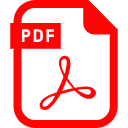Art Clay Silver 950 Series
Short intro movie of Art Clay Silver 950
Characteristics of Art Clay 950 Clay Type
- The silver powder in the clay fuses together/sinters during firing and turns into silver alloy after firing.
- It is composed of metal powder, organic binder and water.
- After firing, it is 60% stronger than Art Clay Silver regular series.
- The strength gives more resistant to scratches, and more design options for delicate works. It has a unique appearance with darker silver and heavier look.
- Shrinkage rate after firing is approximately 10 to 13%.
- Silver purity after firing is 95%, as often used in professional jewelry products.
- Can be open fired in a kiln just like regular Art Clay Silver Series.
- The surface of the fired piece will will be pale gray due to crystallization of silver during firing, but a luster can be obtained by polishing.
Art Clay Silver 950 Clay Type
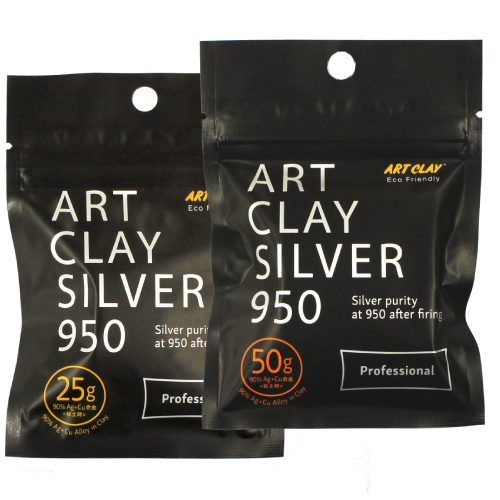
- Available in 25g and 50g package.
- Art Clay 950 is water based clay. Cracks may appear while working, in this case, either add a few drops of water to your working surface and rub with your finger or remix your clay well by adding a small amount of water to your clay, then wrapping and kneading it again in a plastic wrap.
- Take out necessary amount of clay, the rest should be kept in plastic wrap in a sealed container.
- You can easily adjust the softness by kneading the clay
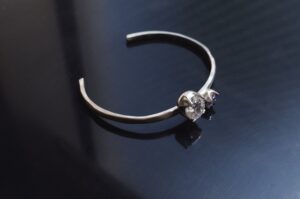
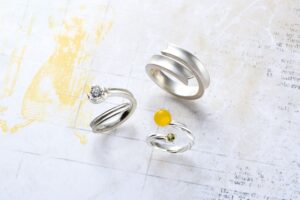
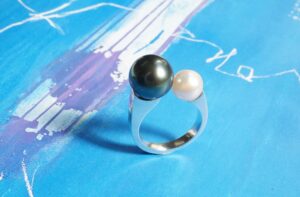
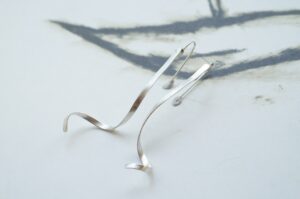
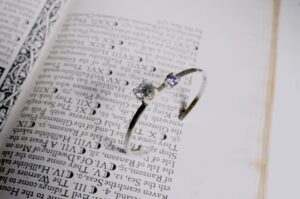
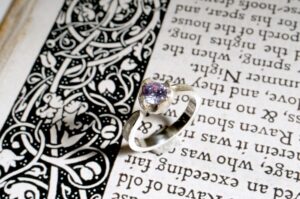
Drying
Drying guideline for drying a piece up to 1mm thick, 5g: *If the piece is larger than this size, drying will require more time.
| Way | Time/Temperature |
|---|---|
| Hot air dryer | More than 10 mins. *1 |
| Electric Hot Plate | More than 10 mins at 150°C/ 302°F |
| Electric Kiln | More than 10 mins at 150°C/ 302°F |
| Natural Air dry method | More than 24 hrs |
*1 : Place the piece as close as safely possible to the hot air while taking care not to drop the piece.
***DO NOT dry the piece over 250°C/482°F, or the binder will be destroyed during drying and deform the shape during the firing process.***
Clay Dryness Test
Place the dried piece on a piece of stainless or glass plate while still warm. Leave for a couple of seconds, then remove your piece from the plate. If you do not see any vapor cloud on the plate where the piece was, drying is completed.
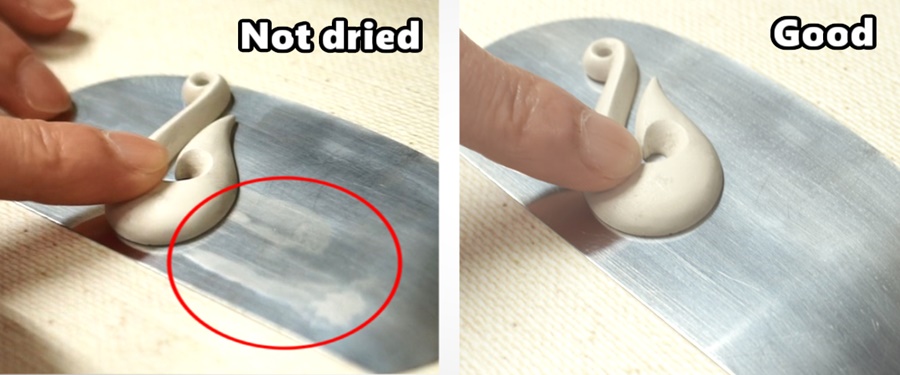
Firing
Open Shelf Firing
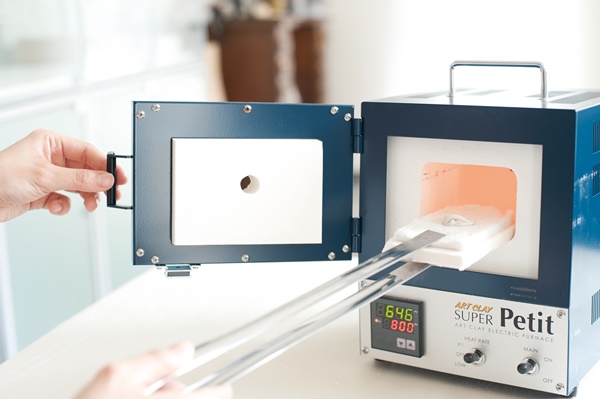
Another great feature is that you DO NOT need carbon to fire. No extra preparation for firing is needed and you make no extra mess! * Always fire in an electric kiln with temperature control. Not suitable for gas stove or torch firing.
2 types of firing schedules are available (standard / quick)
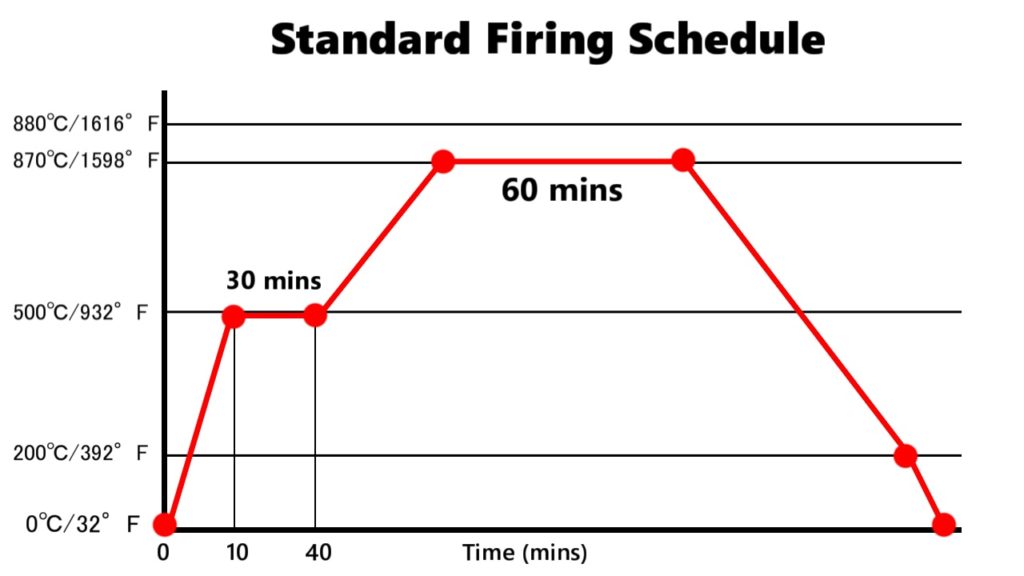
- Put your piece in a room temperature kiln, and set the kiln temperature at 500 Deg.C (932°F)
- Ramp up until 500 Deg. C (932°F) and hold for 30 mins.
- Set the kiln temp at 870 Deg. C (1598°F), and hold it at 870 Deg.C for 60 mins.
- Turn off the kiln and wait until the kiln temperature drops to 200 Deg.C (392°F)
- Take the piece out and wait until the piece cools down completely or leave it until the kiln temperature drops to room temperature.
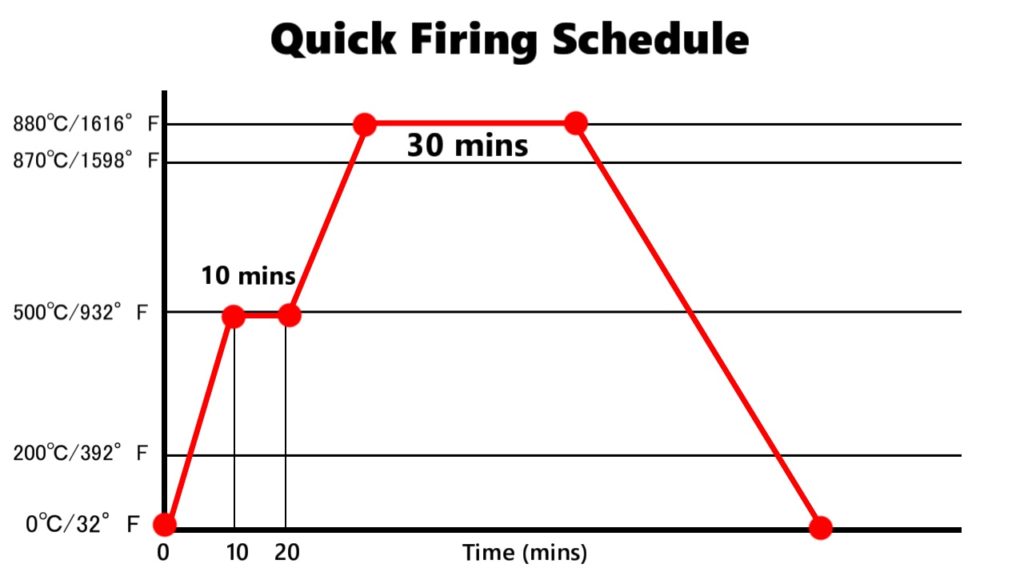
Put your piece in a room temperature kiln, and set the kiln temperature at 500 Deg.C (932°F)
- Ramp up until 500 Deg. C (932°F) and hold for 10 mins.
- Set the kiln temp at 880 Deg. C (1616°F), and hold it at 880 Deg.C for 30 mins.
- Turn off the kiln and wait until the kiln temperature drops to 200 Deg.C (392°F)
- Take the piece out and wait until the piece cools down completely or leave it until the kiln temperature drops to room temperature.
Warning
- This product may crack and burst during firing if insufficiently dry.
- Oxygen is consumed during firing and smoke and gas emissions may result. Please fire in a well ventilated area.
- Do not place just-fired pieces on any flammable surfaces or combustible materials as the piece will be extremely hot and could cause a fire.

Caution
- Take precautions against burns from the heated clay when drying, firing, and after firing.
- Keep out of the reach of children. If the product comes into contact with eyes or mouth, please rinse thoroughly with running water. If problems persist, please see a doctor.

Frequently Asked Questions
Working with ACS 950 is not significantly different from working with regular ACS. If the clay feels a little stiff when first taking out of the package, knead well before use.
There is no difference in drying time. The strength and flexibility after drying are also almost the same as with regular ACS.
In some rare cases, there may be a possibility of reaction due to the metal. In general, because of the high purity of the clay and when compared to SV925, which is generally used in jewelry, if there is no problem with regularly worn silver accessories, the possibility of reaction is low.
You can make Paste of ACS 950 by mixing with water, and you can use it for fixing and joining dried ACS 950 pieces. For fixing and joining fired ACS 950 pieces, please use regular ACS Paste Type to re-fire it at 800 Deg.C (1472F).
Yes, you can use regular ACS paste type for dried pieces, and fired pieces of ACS 950.
When combined with other ACS series products, the clay characteristics will change. Drying conditions and firing conditions will also vary, Therefore it is not recommended to mix clay types as there is possibility of damage during firing.
Shrinkage is approx. 10 to 13% in length.* For making ring, allow extra shrinkage 1 size more than the one was made with regular ACS.
Silver purity will be 95% after firing. You can hallmark your pieces [Sterling] [SILVER] [SV950] [SILVER950] . According to the definition of assay office in UK, silver purity of 92.5% over and less than 95.8% can be hallmarked as [Sterling].
Yes, the same stone specifications apply as with regular Art Clay Silver products.
Soldering is possible but care needs to be shown with soldering absorbed in metal due to porousness of the fired ACS 950.
Yes, and it is the same process as with regular Art Clay series products.
If ACS950 contacts in higher humidity in a moisturizing case, oxidation will proceed. It is recommended that you keep it tightly with plastic wrap in the moisturizing case.
You can use acid on your choice, but it is not necessary. It turns grayish color right after firing as it has very small amount of copper in ACS 950, but it turns silver shine by polishing.
Yes, you can use it as you use with regular ACS. In that case, please use AIDA’s recommended empty syringe.

